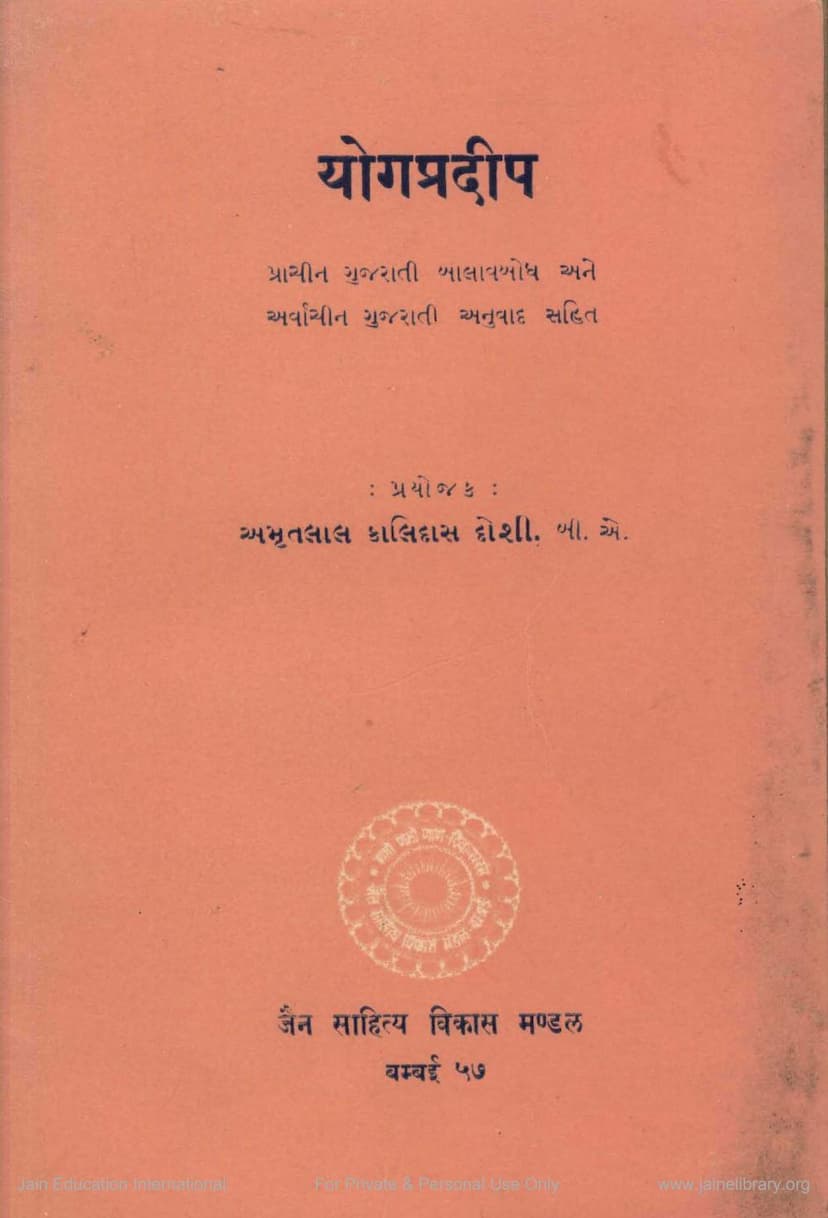Yogapradip
Added to library: September 2, 2025
Loading image...

Summary
"Yogapradip," authored by Amrutlal Kalidas Doshi and published by Jain Sahitya Vikas Mandal, is a significant Jain text focused on Yoga. The book is presented with a "Balabodh" (a simpler explanatory text) in ancient Gujarati and an updated translation in modern Gujarati.
Key Themes and Content:
- The Nature of the Soul (Atma): The primary subject of "Yogapradip" is the soul. It delves deeply into the soul's true nature, the conditions under which its true form is realized, its union with the Supreme Soul (Paramatma), and the ultimate state of liberation (Moksha) achieved by transcending all desires and limitations. The central message is that to achieve the ultimate success in life, one must become a great Yogi.
- Core Yogic Concepts: The text concisely yet accurately outlines various yogic concepts relevant to this pursuit. These include:
- Unmanibhav: A state of mental transcendence or absorption.
- Samarasibhav: A state of equanimity or balanced emotion.
- Rupatit Dhyan: Meditation beyond form or formless meditation.
- Samayik: A state of equanimity and meditation, often practiced for a specific duration.
- Shuddhadhyan: Pure meditation.
- Anahatnad: The unstruck sound, a subtle internal sound perceived in deep meditation.
- Nirakar Dhyan: Formless meditation.
- Spiritual Path and Liberation: The book emphasizes the necessity of becoming a Yogi for spiritual realization. It discusses the journey towards the ultimate state, including the role of knowledge, meditation, and detachment.
- Comparison with Other Texts: The "Nivedan" (Preface) mentions that a thorough evaluation of "Yogapradip" could be achieved through comparative analysis with other yogic texts, suggesting its work is situated within a broader tradition.
- Manuscript Analysis: The compilation of the text was based on six different manuscripts. The preface notes the absence of explicit mentions of the author or the date of composition in any of the available manuscripts. Variations in shloka order and numbering were observed, indicating scope for further research with more available manuscripts.
- Connection to "Yogasara": The preface also highlights that two of the discovered manuscripts present this work, "Yogapradip," as a concluding part after the completion of "Yogasara" (in Sanskrit). The conceptual similarities between "Yogasara" and "Chovvevi" (likely referring to another Jain text) suggest a potential connection and even a possibility of a single unknown author for both.
- Historical Context: A reference in "Shri Nemidas Rachit Panchparmeshthimantra...dhyanmala" mentions "Yogashastra" and "Patanjal Yogasutra" alongside this text, suggesting its popularity and prevalence during that era.
- Influences: While the text appears ancient, it's not considered entirely original. The language and philosophical underpinnings show influences from the Upanishads, Shri Shubchandracharya's "Jnanaarnav," and Shri Hemchandracharya's "Yogashastra," leading to its classification as a "Sangrahatmak" (compilatory) work.
In essence, "Yogapradip" serves as a guide to achieving spiritual liberation through yogic practices, focusing on the understanding and realization of the soul's true nature, its union with the divine, and the attainment of the ultimate state of freedom from the cycle of birth and death.